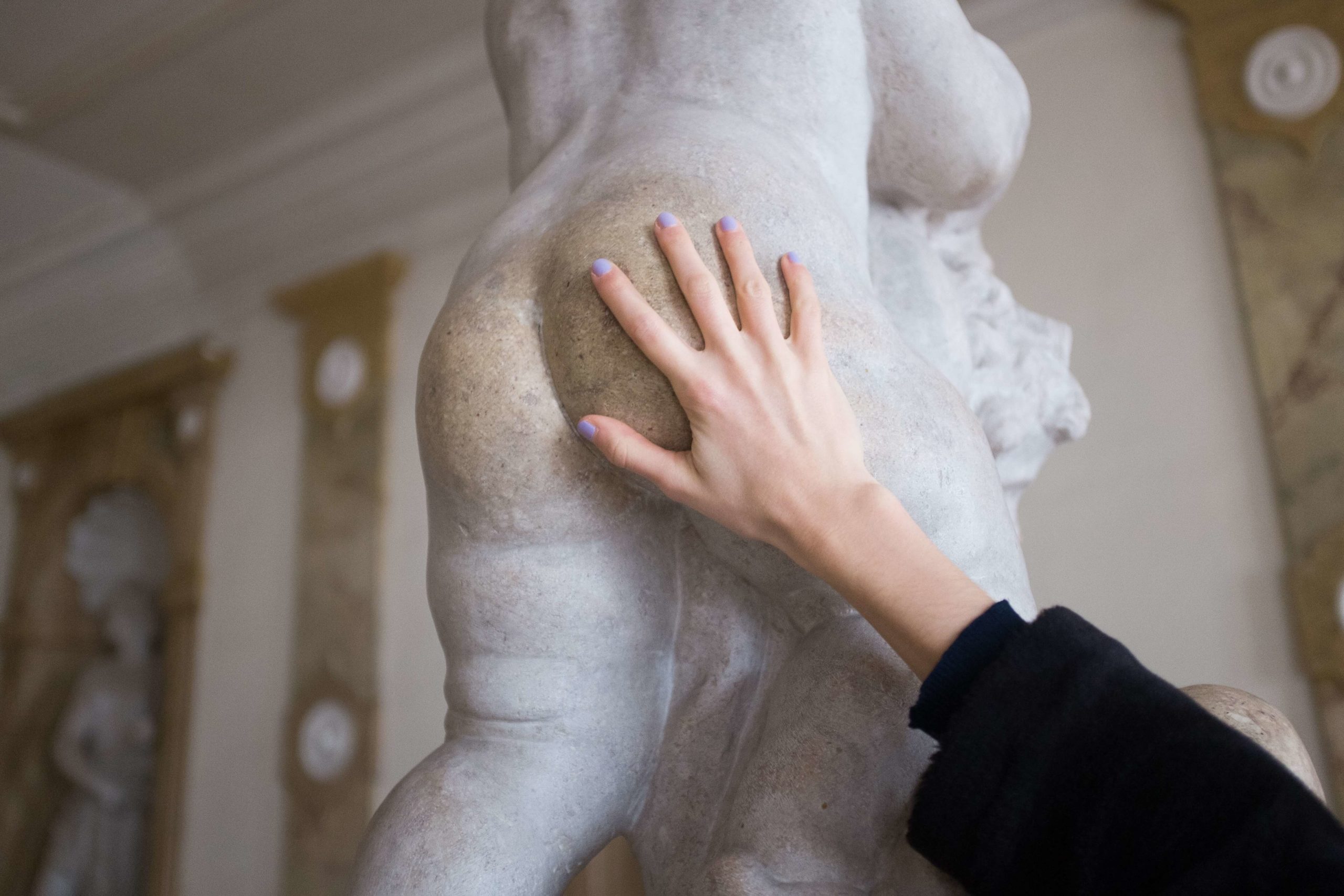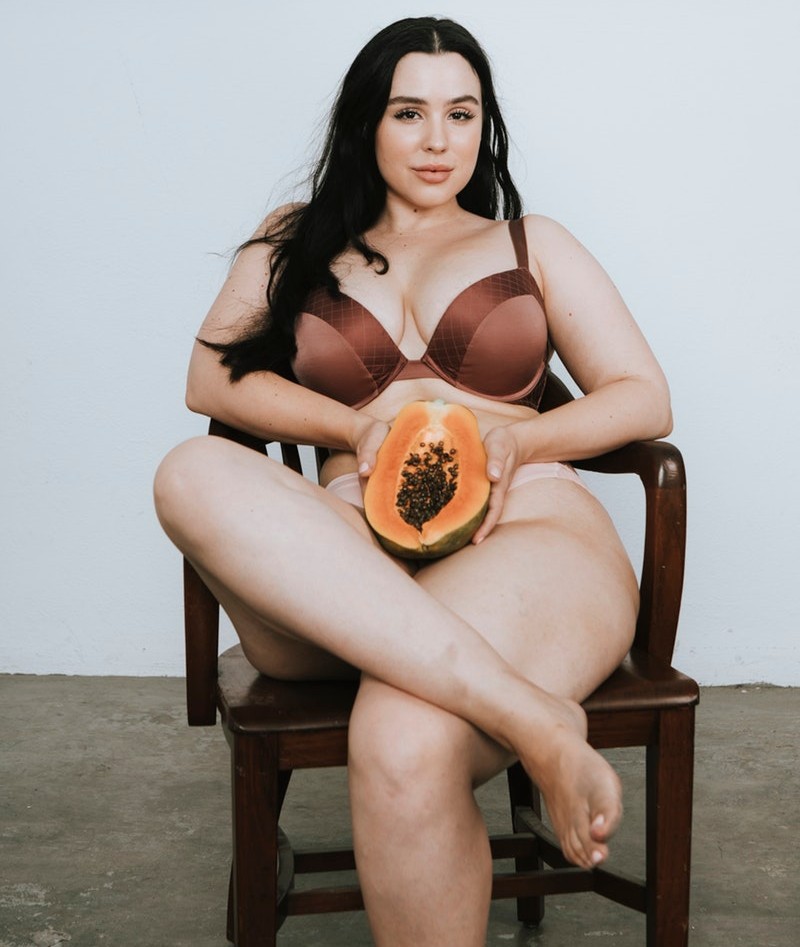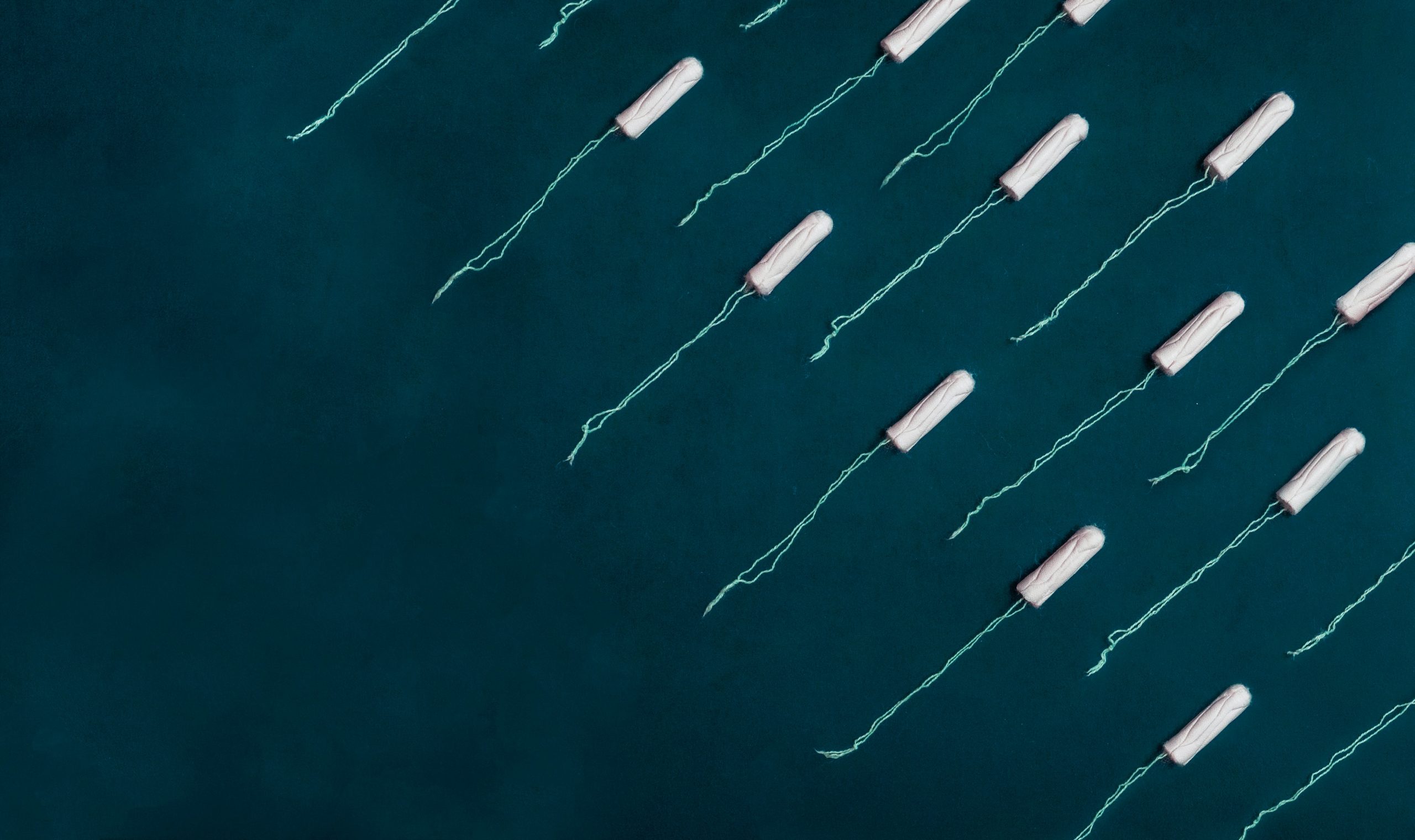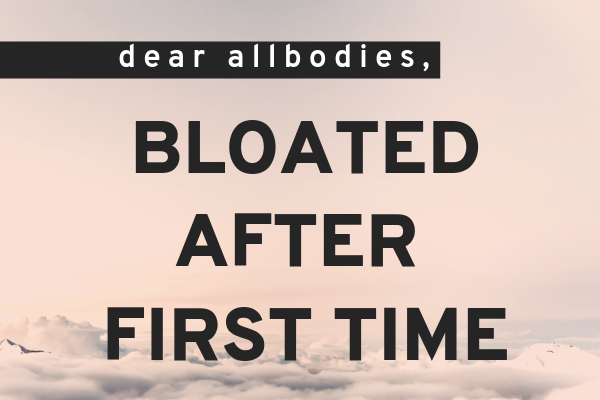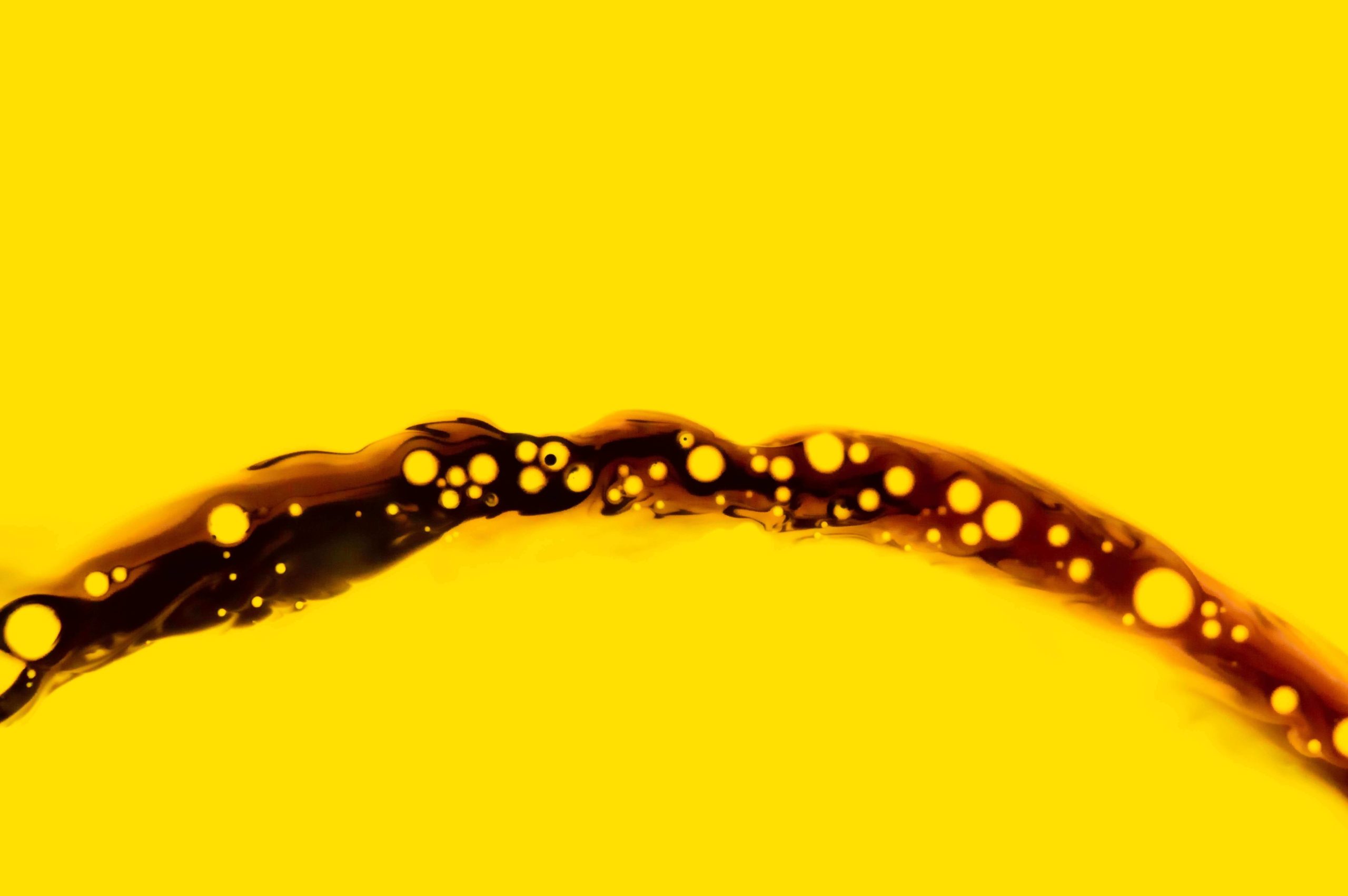
Wild Ways Your Body Changes When You Ovulate

Carolyn Busa
Allbodies Author
Ever have one of those nights when you just need to masturbate? We’re talking like, a real deep need to climax multiple times before crying your eyes out and taking a huge ass sigh of WTF just happened?! While other nights, masturbating is the very last thing you feel like doing. We all know that libido fluctuates. But did you know it may not be as random as you thought? Turns out, your menstrual cycle affects your libido. And the days you feel ready to explode are often linked to ovulation (go figure).
First, what is ovulation?
Simply defined, ovulation is when the egg is released from a mature follicle (a fluid-filled sac) in the ovary and into the fallopian tube. Not everyone ovulates on the same day of their cycle, and you may even ovulate on different days from cycle to cycle. It’s also possible to have cycles where you don’t ovulate at all.
So how do you know if and when you’ve ovulated? While there are a few different ways one can track one’s body changes to get a sense of when ovulation may be a comin’ (breast/chest tenderness, cervical position, and/or pain in the ovary, to name a few). The Daysy Fertility Tracker can be a HUGE help here. Using a special algorithm based on 5 million menstrual cycles and 30 years of research, as well your daily morning temperatures and the menstrual info you provide, Daysy uses an easy color system to tell you your most fertile times (around when you ovulate!). Red is for when you are fertile/possibly fertile, green for when you are not fertile, and a red flashing light is for your predicted day of ovulation.
Why does your temperature matter when thinking about ovulation? Because post-ovulation, your body wants to make a cozy home in case implantation occurs. And a cozy home means an increase in body temperature. So, if your temperature has shifted at least 2/10ths of a degree from your temperatures over the last 6 days, ovulation has occurred (1). If your temps are irregular, or you can’t figure out whether it has shifted, Daysy has your back. Not only does their device do all the tracking for you (and their device is sensitive enough to pick up on such a small amount of change), but you can also call their customer service team, who are really more like period coaches, to help you sort through your charts and figure it out. We know…it’s awesome!
Great. So your temperature can tell you if you’ve ovulated after the fact. But if you’re curious to know when ovulation may be coming, or when you might start to feel those tingles in your groin, the consistency of your cervical fluid can clue you in! Leading up to ovulation, cervical fluid has more of a stretchy, egg-white quality to it so that it can better assist sperm to move safely through the acidic vaginal canal. Post-ovulation this fluid becomes more dry and less stretchy. You can track the consistency of your cervical fluid on the DaysyView App.
**If you are using the Daysy device, note that they are giving you info on your entire fertile window, not just when you ovulate. So, if you don’t want to get down with your cervical fluids, you don’t need to. Whenever the device marks you in the red zone, it means ovulation may be coming soon, so you can start prepping.
Ovulation is necessary for reproduction (and, we’d be remiss in not adding, for your health overall). Of course, just because you can ovulate doesn’t mean it’s your job to reproduce. But, mother nature has sure set us up in some wild ways to help facilitate the process. Those who aren’t looking to make babies, take note. We too can use ovulation to our advantage!
Ovulation and Desire
Trying to decide when to plan your next romantic getaway or date night? Want to have a fun night in, solo?
Even though a person who ovulates can always be receptive to sex [5], studies have shown that there are periods of time when menstruators’ libido peak. Researchers Stanislaw and Rice asked 4000 menstruators to note the day in their menstrual cycle that they noticed a peak in desire [6]. Lo and behold, sexual desire was usually first experienced mid-cycle, around the expected ovulation date.
When researchers at Arizona State University asked 236 women to keep diaries tracking their menstruation, masturbation peaked around the time of ovulation [7]. And according to the article “Sexual arousability and the menstrual cycle” [16], ovulating women* shown erotic videos reported greater increase in sexual desire and erotic fantasies over women* who weren’t ovulating. Mark that cal!
Ovulation and Attraction
So, ovulation can cause you to be more horny than during other phases of your menstrual cycle. Good to know! But that’s not all ovulation appears to do. It also causes the body of the ovulator to change to draw more attention from others.
In a 2007 study published in Hormones and Behavior [8], psychologist Martie Haselton, PhD, had judges rate the ‘attractiveness’ of photos of women* at different points in their menstrual cycles based on ‘grooming and eye-catching dress.’ One photo was taken before ovulation and the other was taken in the luteal phase, or the phase post-ovulation. Well, the closer the women* were to ovulation when photographed, the more frequently their photograph was chosen as more attractive.
A 2008 study [9] showed significant differences in the walking behavior of women* between their follicular and luteal phase of menstruation (when ovulation occurs), which paved the way for a 2012 study [10] which determined women* walked slower in front of men* when about to ovulate. These behaviors were interpreted as “unconscious desires of women* near ovulation to reinforce their attractiveness.” Geez!
And we’ll leave you with this fun one. When lap dancers in Albuquerque strip clubs [15] recorded their menstrual periods, work shifts, and tip earnings for 60 days, highest earnings were on or around ovulation. So, need to book a performance? Big meeting? You may want to think again about when you schedule it!
Ovulation + Scent
Well, our butts may not swell during ovulation like female primates’ do, but we’re still giving off some serious vibes. Miller and Maner [11] found that a man’s* testosterone increased when smelling T-shirts worn by ovulating women* compared to T-shirts worn by non-ovulating women*. Female* body odor was collected using either under-arm cotton pads, or by asking subjects to wear cotton T-shirts to bed.
In another interesting smell study [14], vaginal secretions from pre-ovulatory and ovulatory women* were considered less unpleasant in odor than those from menstrual, early luteal, and late luteal phase. Note to those readers who wish to continue to get laid: Never use the phrase ‘less unpleasant.’
Hmmm. Some more food for thought!
a note On Hormonal Birth Control
It’s worth noting (and remembering) here that on some forms of hormonal birth control, you no longer ovulate, so much of this may not apply. And, even if you are still ovulating, hormonal birth control interferes with your biology. For example, in the strip club example above, dancers using contraceptive pills showed no earning peaks throughout the period (15)
Using Ovulation to your Advantage
Of course, every body is different. So first things first. Start to check in with how you feel during ovulation. Use a device like Daysy to start tracking when you ovulate, and start tuning in to your body. Do you have more energy? Are you hornier than usual? How do you feel in your body? You can even take notes!
While we all have been taught that ovulation is the time for those trying to get pregnant, what we haven’t been taught is that all of us can use this time to our advantage. Science is on our side!
If you are one of those people who comes more alive during this phase, use it! Daysy can alert you to when your next ovulatory phase will be, so plan for meetings, creative projects, dates (though be super careful if you are having hetero intercourse and don’t want to get pregnant), etc…. Use that magnetic energy to your advantage!!
*Language used in studies
Medically reviewed by: Danielle LeBlanc, RN
In partnership with Daysy
All content found on this Website, including: text, images, audio, or other formats, was created for informational purposes only. The Content is not intended to be a substitute for professional medical advice, diagnosis, or treatment. Always seek the advice of your physician or other qualified health provider with any questions you may have regarding a medical condition
1. Weschler, Toni. Taking Charge of Your Fertility: the Definitive Guide to Natural Birth Control, Pregnancy Achievement, and Reproductive Health ; 20th Anniversary Edition. New York, NY: William Morrow, an imprint of HarperCollinsPublishers, 2015.
2.The Menstrual Cycle, UCSF Health – https://www.ucsfhealth.org/education/the-menstrual-cycle.
3. Reed, Beverly G, and Brice R Carr. “The Normal Menstrual Cycle and the Control of Ovulation,” Updated August 5, 2018.
4. Stages of the Menstrual Cycle, Healthline – https://www.healthline.com/health/womens-health/stages-of-menstrual-cycle
5. How the Menstrual Cycle Affects Women’s Libido, Psychology Today – https://www.psychologytoday.com/us/blog/all-about-sex/201503/how-the-menstrual-cycle-affects-womens-libido
6. Stanislaw, Harold, and Frank J. Rice. “Correlation between Sexual Desire and Menstrual Cycle Characteristics.” Archives of Sexual Behavior 17, no. 6 (1988): 499–508. https://doi.org/10.1007/bf01542338.
7. How the Menstrual Cycle Affects Women’s Libido, Psychology Today – https://www.psychologytoday.com/us/blog/all-about-sex/201503/how-the-menstrual-cycle-affects-womens-libido
8. Haselton, Martie G., Mina Mortezaie, Elizabeth G. Pillsworth, April Bleske-Rechek, and David A. Frederick. 2007. “Ovulatory Shifts In Human Female Ornamentation: Near Ovulation, Women Dress To Impress”. Hormones And Behavior 51 (1): 40-45. doi:10.1016/j.yhbeh.2006.07.007.
9. Provost, Meghan P., Vernon L. Quinsey, and Nikolaus F. Troje. “Differences in Gait Across the Menstrual Cycle and Their Attractiveness to Men.” Archives of Sexual Behavior 37, no. 4 (2007): 598–604. https://doi.org/10.1007/s10508-007-9219-7.
10. Guéguen, Nicolas. “Gait and Menstrual Cycle: Ovulating Women Use Sexier Gaits and Walk Slowly Ahead of Men.” Gait & Posture 35, no. 4 (2012): 621–24. https://doi.org/10.1016/j.gaitpost.2011.12.011.
11. Miller, Saul L., and Jon K. Maner. “Scent of a Woman.” Psychological Science 21, no. 2 (2009): 276–83. https://doi.org/10.1177/0956797609357733.
12. Roberts, S. Craig, L. Morris Gosling, Vaughan Carter, and Marion Petrie. “MHC-Correlated Odour Preferences in Humans and the Use of Oral Contraceptives.” Proceedings of the Royal Society B: Biological Sciences 275, no. 1652 (December 2008): 2715–22. https://doi.org/10.1098/rspb.2008.0825.
13. Birth Control Pills Affect Women’s Taste in Men, Melinda Wenner – https://www.scientificamerican.com/article/birth-control-pills-affect-womens-taste/
14. Doty, R., M. Ford, G. Preti, and G. Huggins. “Changes in the Intensity and Pleasantness of Human Vaginal Odors during the Menstrual Cycle.” Science 190, no. 4221 (1975): 1316–18. https://doi.org/10.1126/science.1239080.
15. Miller, Geoffrey, Joshua M. Tybur, and Brent D. Jordan. “Ovulatory Cycle Effects on Tip Earnings by Lap Dancers: Economic Evidence for Human Estrus?” Evolution and Human Behavior 28, no. 6 (2007): 375–81. https://doi.org/10.1016/j.evolhumbehav.2007.06.002.
16. Slob, A. Koos, Cindy M. Bax, Wim C.j. Hop, David L. Rowland, and Jacob J. Van Der Werff Ten Bosch. “Sexual Arousability and the Menstrual Cycle.” Psychoneuroendocrinology 21, no. 6 (1996): 545–58. https://doi.org/10.1016/0306-4530(95)00058-5.
